Mortar vs Concrete: Key Differences for Philadelphia Projects
Philadelphia’s streets tell a story in brick, stone, and concrete structures.
8 min read
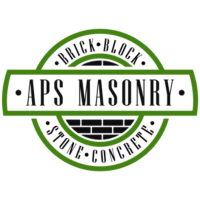 Alec Serowatka
:
Nov 30, 2023 10:30:05 AM
Alec Serowatka
:
Nov 30, 2023 10:30:05 AM
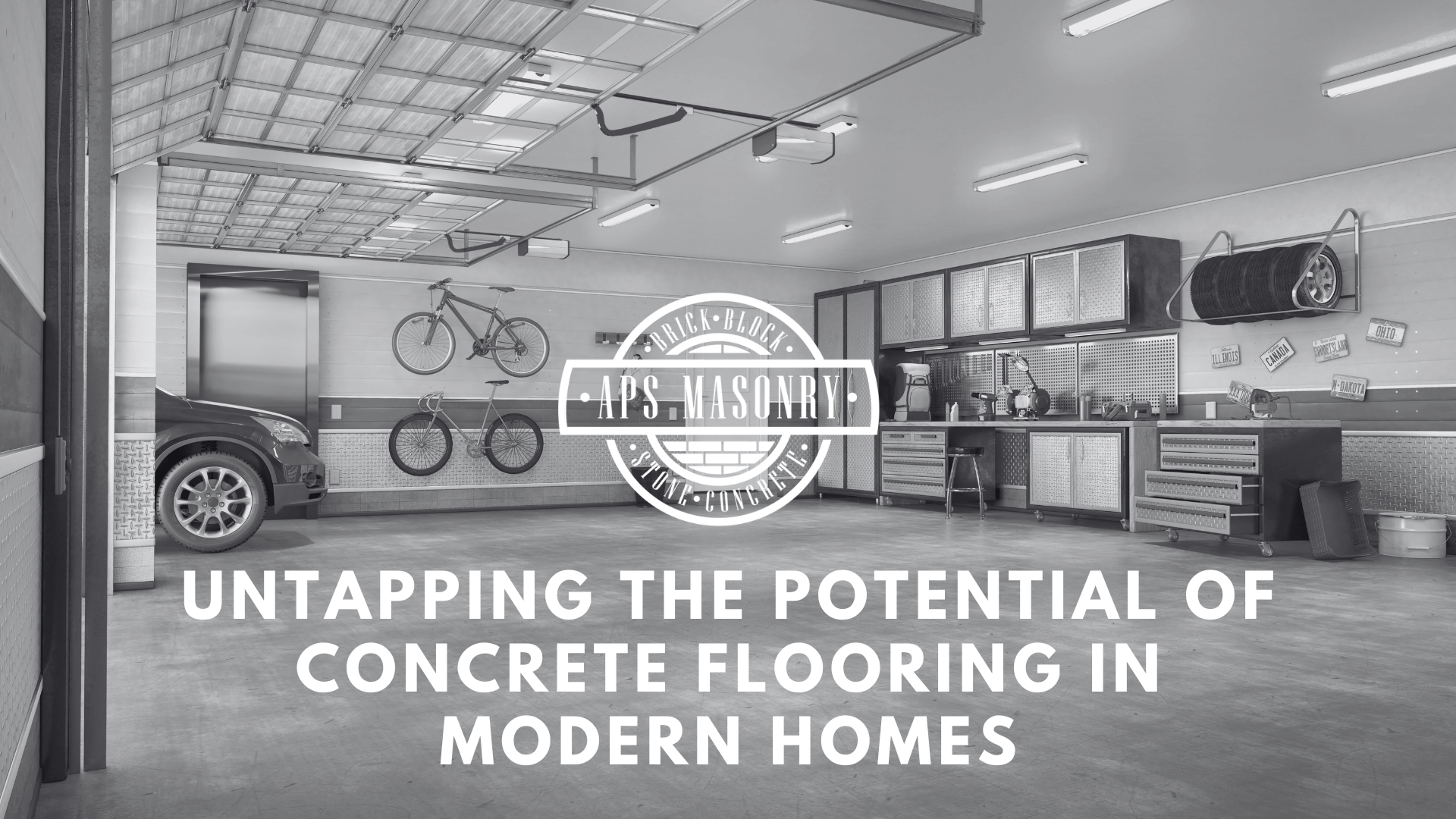
Concrete flooring is becoming a popular choice for modern homes because it's durable, cost-effective, and versatile in style. Traditionally used in industrial spaces, it's now valued in homes for its ability to handle heavy use and easy cleaning, especially in busy areas like kitchens and living rooms.
Concrete floors can also be customized to look like high-end materials and come in various finishes and colors to match any decor. Plus, they help keep indoor temperatures steady, which can save on energy bills. All these benefits make concrete flooring a practical and stylish option for today's homeowners.
According to a market research study published by Custom Market Insights, global concrete floor coatings market size & share revenue was valued at approximately USD 5.8 Billion in 2021 and is expected to reach around USD 8.3 Billion by 2030.¹
Concrete flooring is composed of a mixture of:
This combination gives concrete its renowned strength and hardness. While its rigidity may not provide the cushioning comfort of other flooring materials like carpet or wood, this characteristic makes concrete flooring a durable and abrasion-resistant option ideal for various applications, from residential spaces to garage floors.
Applying a sealant is a key step in guaranteeing the longevity and functionality of a concrete floor. A well-sealed concrete floor:
.jpg?width=565&height=318&name=APS%20M%20Template%20(16).jpg)
Polished concrete floors can be a stunning and practical addition to many spaces in a modern home, particularly those that embrace an industrial or minimalist aesthetic. Here are some ideal locations:
However, it is important to consider the climate and make sure there is adequate insulation and drainage to prevent cold and damp floors.
For homeowners looking to install concrete flooring over a wood-framed subfloor, pouring a thin layer of overlay concrete and applying the desired colorizing and polishing techniques is possible. It is important to remember that even though a concrete overlay may be thin, it can still be quite heavy. Therefore, any wood framing below the overlay should be structurally reinforced.
With a thoughtful approach and understanding of your home's specific requirements, concrete slabs are a versatile and resilient flooring choice for various residential areas.
A cost-benefit analysis is key in fully appreciating the value of concrete flooring. This analysis evaluates the initial and sustained costs of concrete flooring, including installation, maintenance, and potential cost savings.
From basic installations that cost as little as $2 per square foot to high-end, artistically rendered floors at $30 or more per square foot, the cost range of concrete flooring caters to various budgets.
Concrete flooring offers long-term savings due to its durability and low-maintenance requirements compared to other popular flooring options such as carpeting, vinyl tile, wood laminates, and tile floors.
The cost of installing concrete flooring varies. It depends on various factors, such as the space's size, the installation's complexity, the type of concrete or coating used, and the project's location.
For example, installing concrete flooring involves several costs for an average-sized basement in a typical home. The initial concrete slab installation, covering around 800 square feet, can range from $3,200 to $5,600.
Surface preparation, such as grinding the concrete, would add approximately $4,800. If decorative finishes like methyl methacrylate (MMA) coatings are desired, an 800-square-foot space could cost around $6,000.
In total, homeowners should budget between $13,000 to $16,400 for the initial investment in concrete flooring, considering location and specific project requirements.
Understanding the various costs associated with concrete flooring installation can help homeowners make informed decisions about their budget and design preferences.
Aside from the initial investment, concrete flooring presents a range of long-term financial advantages, including:
These advantages make concrete flooring financially beneficial and practical for many homeowners.
When it comes to maintenance, concrete floors generally require less upkeep than other types of flooring. However, following a regular maintenance routine is important to keep concrete floors in top-notch condition.
In the long run, choosing concrete flooring can result in significant cost savings, as there is no need to replace worn or damaged flooring, and energy efficiency is improved.
Designing with concrete flooring offers a wealth of design possibilities, including:
This aesthetic versatility makes concrete flooring an excellent choice for homeowners seeking a personalized and adaptable option for their modern homes.
Consider a homeowner wanting to refresh her living room flooring. Intrigued by concrete's versatility, she opts for it. With concrete, the homeowner enjoys custom finishes, from sleek polish to rustic textures, and a wide palette of colors to match her décor or make bold statements. Concrete allows easy updates with stains or overlays, ensuring her space stays stylish with minimal effort. Concrete flooring is ideal, offering personalization and adaptability for her modern home. Check out our blog on remodel tips for more information.
Applying custom finishes and textures enhances the aesthetic appeal of concrete flooring. Techniques such as:
These finishes and textures are used on new and existing concrete floors to create personalized and unique designs.
Concrete flooring can achieve various textures, such as smooth, textured finishes resembling slate, brick, or stone, as well as painted and customized textures.
During the installation of a concrete floor, texture can be added using:
By incorporating custom finishes and textures, homeowners increase the aesthetic appeal of their concrete flooring to suit their design preferences and style.
Picture a stylish loft in Philadelphia's bustling Fishtown district, where custom concrete flooring steals the show. Through staining, dyeing, and polishing techniques, the floors exude a luxurious sheen and rich color palette, perfectly complementing the urban ambiance. Decorative coatings and concrete stamping add intricate patterns. This flooring transforms the loft, showcasing how concrete can be tailored to elevate style and sophistication in modern urban spaces.
Installing polished concrete floors offer numerous practical advantages, making them ideal for modern homes. One notable benefit is their ease of cleaning. A polished concrete floor is resistant to stains and spills, and its smooth surface makes it easy to clean with a mop or vacuum.
This low-maintenance characteristic makes polished concrete flooring a popular choice for busy households and pet owners who appreciate its scratch-resistant and easy-to-clean properties. The cost of polished concrete floors is often reasonable, making it an attractive choice for many homeowners.
Another practical perk of polished concrete floor installation is their ability to improve light reflectivity. Polished or high-gloss finished concrete floors help conserve energy and lower lighting bills by intensifying the natural light entering a home during the day and diminishing the requirement for artificial lighting at night. This energy-saving feature is eco-friendly and contributes to long-term cost savings for homeowners. Check out our blog on the pros and cons of concrete here.
Despite the range of benefits that concrete flooring offers, it is important to know the potential drawbacks. One downside is its coldness underfoot, which can concern homeowners in colder climates.
In such cases, installing radiant heating underneath the concrete floors helps address this issue and provides a more comfortable living environment.
Another potential drawback of concrete flooring is its susceptibility to moisture and cracking. Moisture penetration may result in mold or mildew in the home, which is prevented by properly sealing the concrete floor.
Cracking due to settlement or shrinkage is also a common concern with concrete floors; however, this issue is addressed by applying micro toppings or decorative concrete overlays to cover existing cracks and create a fresh, even surface.
In today's eco-conscious world, the sustainability and environmental impact of concrete flooring needs to be evaluated. Concrete production requires a substantial energy expenditure and an abundance of carbon dioxide, with the cement industry responsible for at least 8% of global human-caused emissions.
However, concrete flooring is also one of the most sustainable flooring options available, offering:
Considering these factors and implementing sustainable practices in producing and using concrete flooring minimizes its environmental impact.
Despite its considerable carbon footprint, concrete flooring presents various eco-friendly benefits, such as energy efficiency through improved light reflectivity and temperature regulation.
By considering the environmental impact and weighing the pros and cons of concrete flooring, homeowners make informed decisions about the sustainability of this flooring option for their homes.
Concrete flooring is the perfect blend of style, durability, and cost-effectiveness for modern homes. With customizable designs, long-term savings, and low-maintenance requirements, it’s an ideal choice for busy homeowners who want both practicality and elegance.
Ready to elevate your living space? Trust the experts at APS Masonry Contracting to bring your vision to life. Whether you need polished concrete for your kitchen or custom finishes for your open-concept living area, our team has the skills and experience to deliver exceptional results.
Don’t wait, contact APS Masonry Contracting today for a free estimate and take the first step toward creating a stunning, durable space you’ll love for years to come!
Polished concrete floors, known for their smooth, reflective surfaces, typically range from $2 to $16 per square foot. Adding color through staining can increase the price slightly, but it’s an affordable way to create a decorative concrete floor that suits your personal style. Compared to other flooring materials like hardwood or vinyl flooring, concrete surfaces offer a cost-effective and long-lasting solution for residential spaces.
Yes, residential concrete floors are generally more budget-friendly than hardwood. The cost of a polished or decorative concrete floor ranges between $2 and $15 per square foot, while hardwood flooring averages $12 to $20 per square foot. Additionally, concrete surfaces are easier to maintain, making them a practical choice for long-term savings.
C20 / Gen3 / ST1 concrete is typically used for domestic and residential concrete floors. It provides the durability needed for spaces like garage floors or basements and can be customized with finishes for a polished or decorative appearance. For added comfort, radiant floor heating systems can be installed beneath the concrete surface.
Plain concrete slabs are the simplest and most economical option when compared to other flooring materials. However, they lack the shine and durability of polished or sealed concrete surfaces. Adding a concrete sealer not only improves the aesthetics but also enhances the floor’s resistance to stains and moisture.
It’s unlikely. Polishing concrete involves removing existing flooring, grinding the concrete surface with specialized machinery, and applying precise sealants. This process requires professional expertise to achieve a flawless and durable finish. Hiring experts guarantees that your decorative concrete floor is completed correctly and efficiently.
Sources:
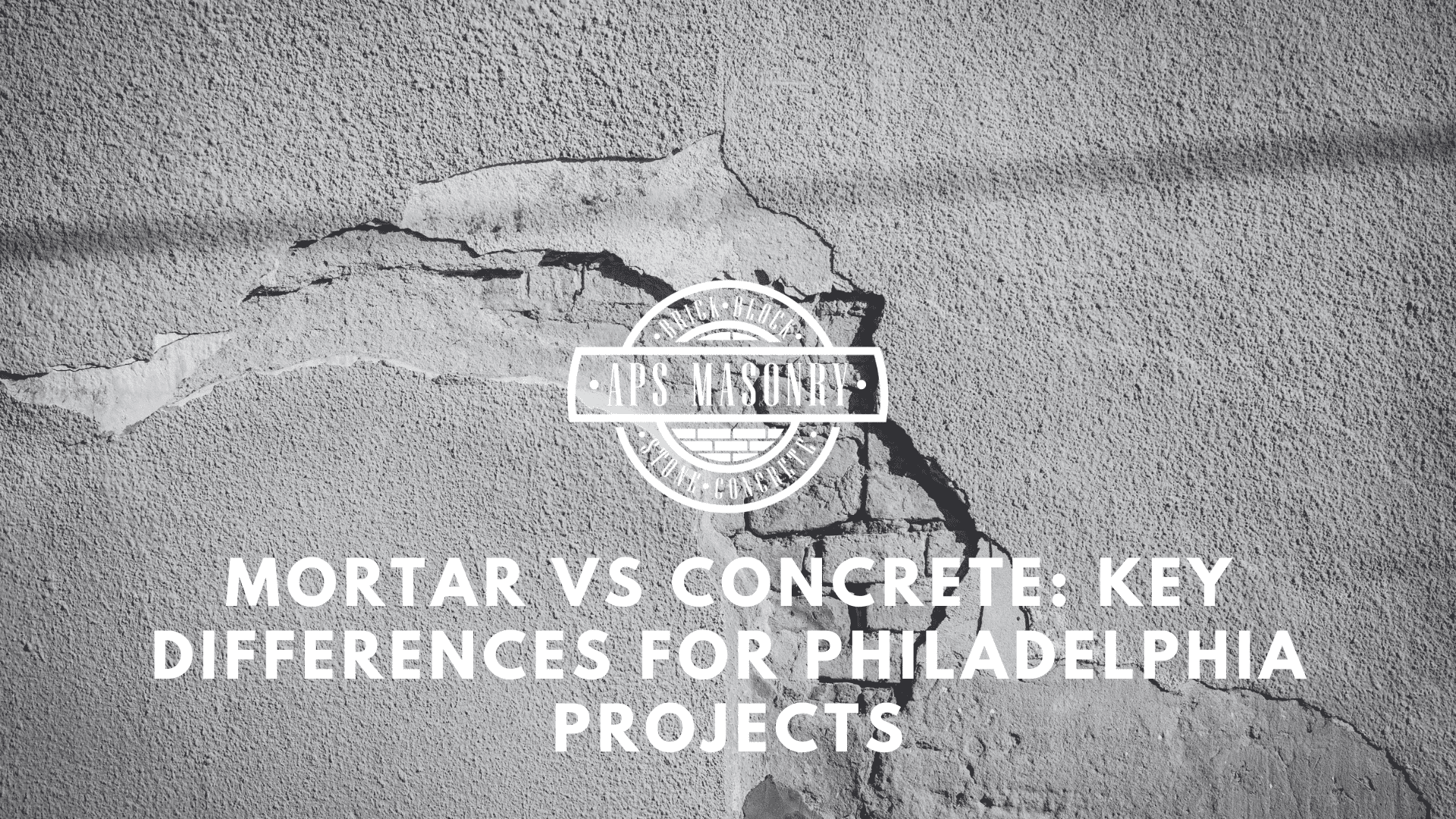
Philadelphia’s streets tell a story in brick, stone, and concrete structures.
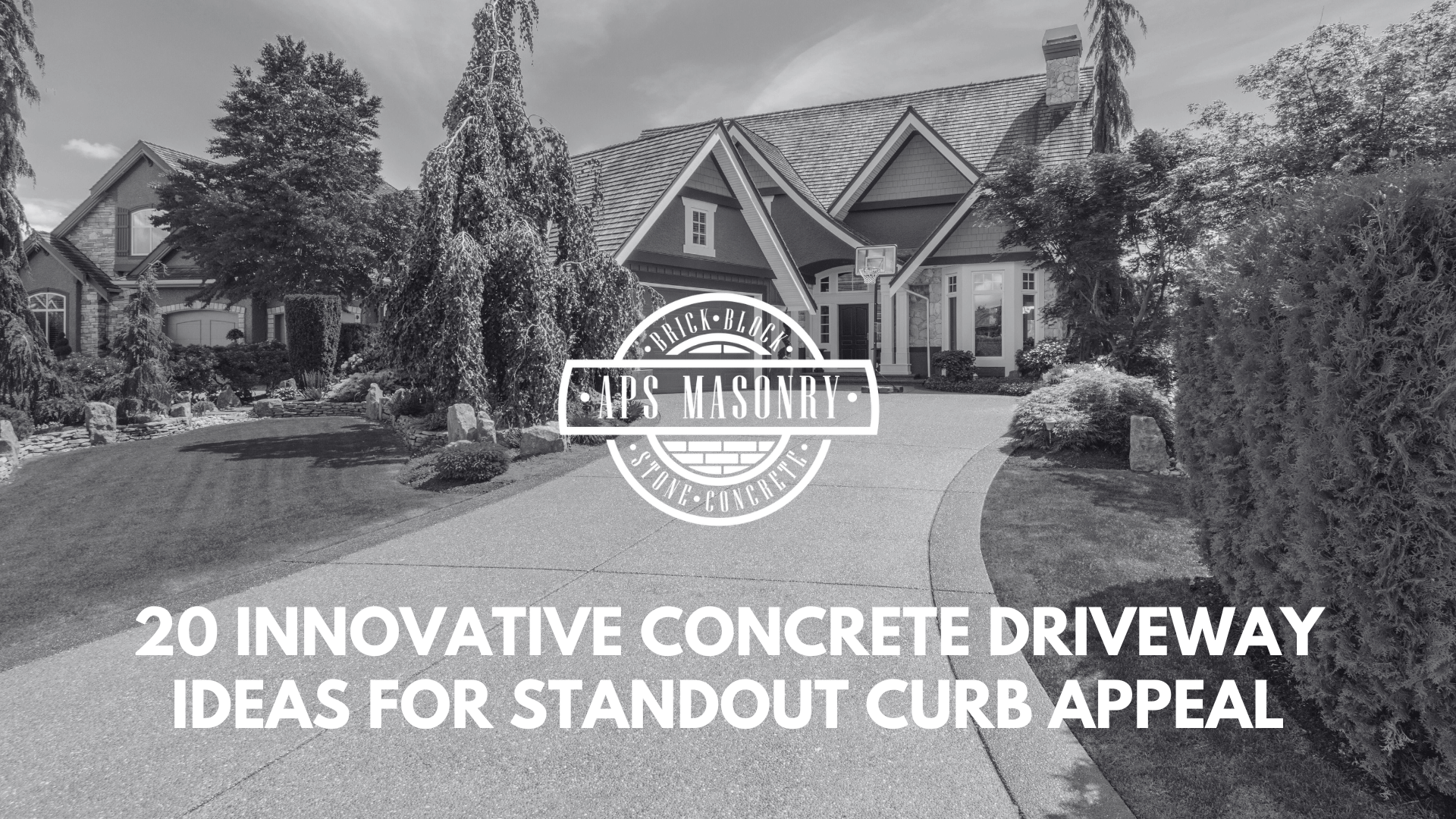
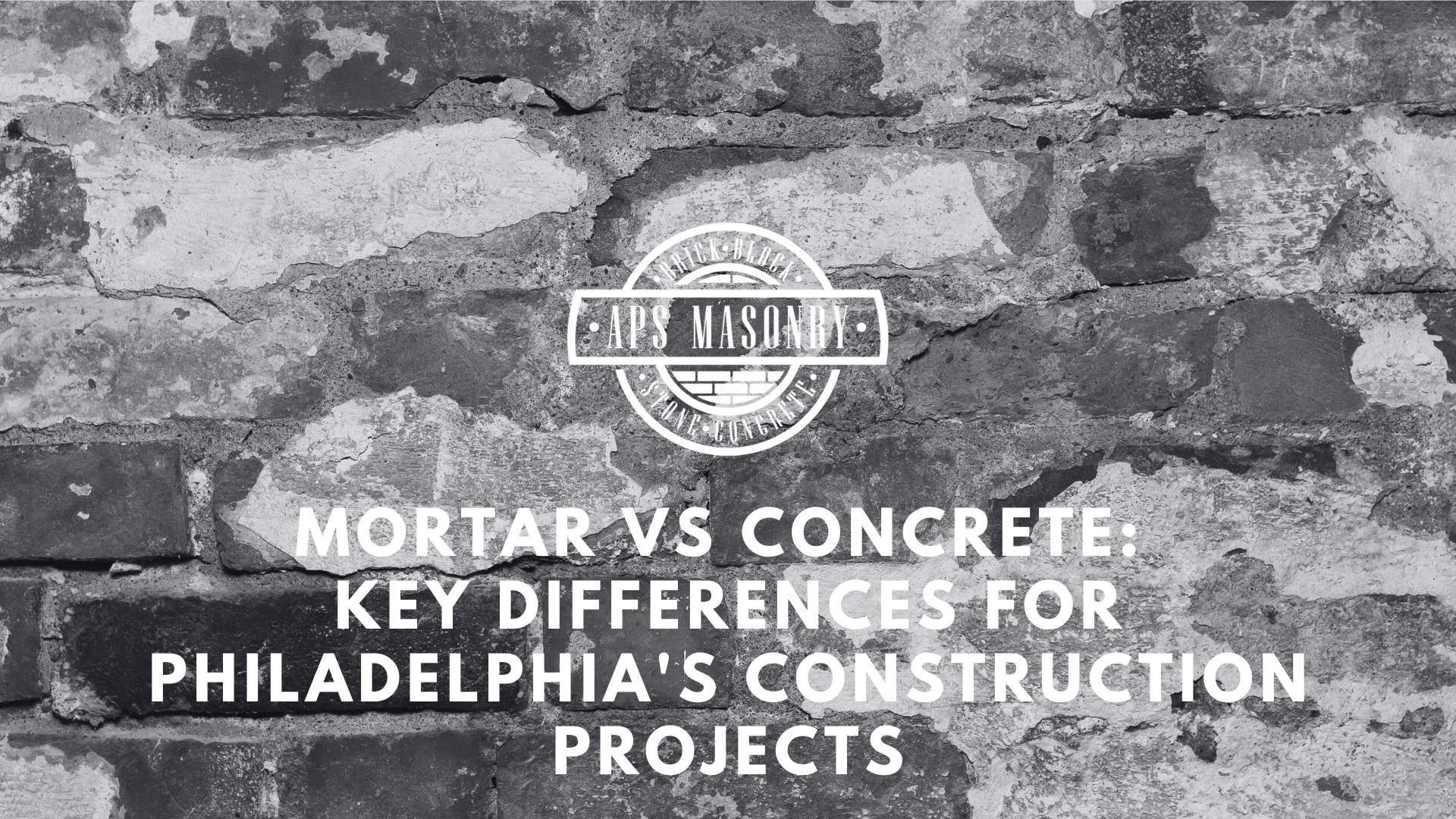
The differences between mortar and concrete are important for your construction projects in Philadelphia. Mortar is great for binding bricks and...